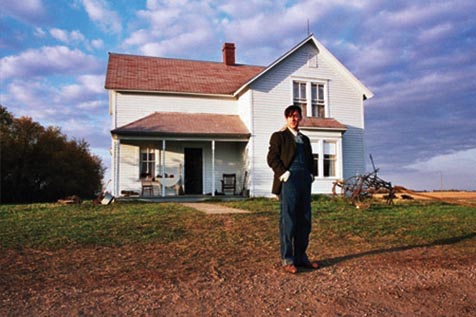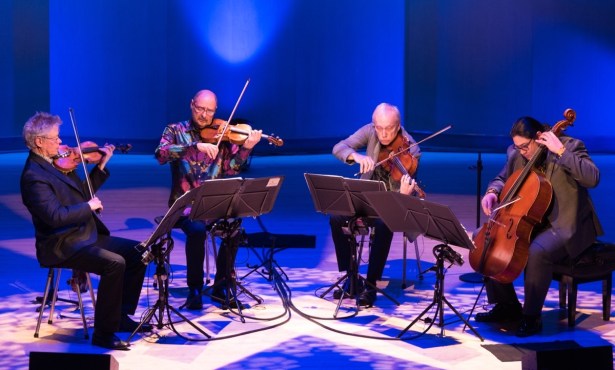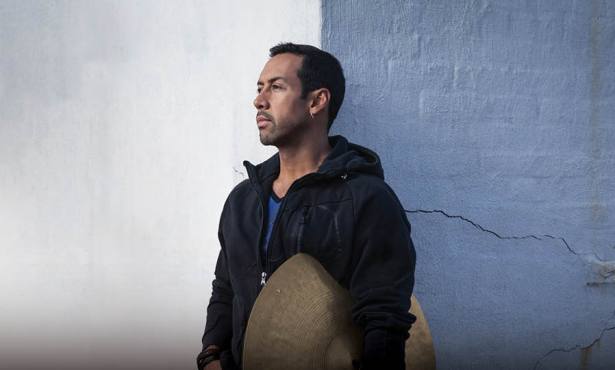Director Ali Selim
Discusses Sweet Land
Immigrants, Socialists, and the American Nightmare

The average 21st-century American thinks very little about the life of a German immigrant settling into the Minnesota farming life amid a post-World War I period of raging xenophobia. But as Ali Selim’s insightful film Sweet Land reveals, such an experience is integral to understanding the American dream, and the nightmarish paths that some must endure before acceptance in a new society. And while his film about a mail-order bride from Germany entering a conservative farming town to marry Olaf, a Norwegian emigre, is set in 1919, the experience of the protagonist Inge-played marvelously by Elizabeth Reaser-very much continues for those still immigrating to the United States today. Selim, a Minnesotan who toiled in TV advertising for years and then spent nearly 20 years getting this movie made, recently answered some questions about his film. For the full interview, see independent.com/sweetland.
You left the German-speaking parts, which comprise the overwhelming bulk of the protagonist’s lines, without subtitles. Why? Well, mostly because I want the audience to feel what the characters are feeling. They are struggling to find a way to communicate beyond or without language, a largely intellectual medium. I think what is happening between the characters, and very successfully between Tim Guinee and Elizabeth Reaser, is very emotional and that subtext would be betrayed by giving the audience the text of what is happening. Also, it is an English-language film and having subtitles drop in fleetingly would be so distracting.
The film deals with a period of xenophobia in American history that most of us have entirely forgotten-that rage against the Germans following WWI. What can a look at that period of American life inform us about today? I agree, but I don’t know that we have forgotten. As Will Weaver [the author of the short story, “A Gravestone Made of Wheat,” on which Sweet Land is based] is fond of saying, “This film shows us how 1920 was like 2007.” But really, 1920 was like 1925, like 1935, like 1947, 1953, and so on and so forth. The immigrant story will never end here in America.
The American pie symbol was powerful. What kind of pie was it? (Laughs.) It was actually the best apple pie I have ever had-probably because of the lard right out of the farmyard. In that scene where the women eat the whole pie, I had to help them off-camera. That’s one of the absolute highlights of my life, eating an entire pie with Alex Kingston and Elizabeth Reaser. I tried to find “American” symbols like apple pie, baseball, cars, entertainment, et cetera, and, most importantly, land, that would give Inge things to do, rather than say. Also, I think her participation in these things, especially in burying Olaf in the land, solidifies and defines her connection to America.
This film seems to be quite the departure from TV advertising, a jump from 30-second-long, in-your-face spots to a slower period piece where the storyunravels at its own languid pace and the characters’ traits are revealed through time. How was that transition as a filmmaker? The leap is a lot less dramatic than people would think. As a “storytelling” commercial director, my job was also to listen to the story and tell it in the way it begged to be told. My commercials always had a beginning+middle+end, they were shot on 35mm, and I worked with great actors. The main two differences I found were the way in which you work with actors. First, on a film, you partner with them at a very deep level, while on a commercial you sort of trick them into codification. Secondly is this very elusive thing called pace. I think even the greatest directors with years of successful films under their belts struggle to find it. I am glad people perceive this to be a success, but in the editing room it was a genuine struggle we didn’t know we had worked through until our very first screenings.
There’s an underlying battle in the film between emergent American capitalism and the waves of socialism that occasionally pop up in our country’s history. Clearly, capitalism has won for better and worse, but did the socialist visionaries from Minnesota’s past have a point? I should not be giving political commentary because I am only going to get myself in trouble. But Minnesota’s socialist past gave birth to the modern-day Democratic Party, which may be for better or worse. Also, I have observed, irregardless of the big machine of government and industry, there is a little socialist in all of us. You go to these small towns where everyone, because of environmental and religious issues, votes Republican-but then you watch them living their lives as socialists. The joke on the festival circuit whenever we were asked the question, “What happened to the blonde girl in the train station?” was that she married the socialist and they gave birth to Paul Wellstone.
4•1•1
Campbell Hall on Wednesday, May 30, at 7:30 p.m. Call 8933535 or seeartsandlectures.ucsb.edu. For more on the film, see sweetlandmovie.com.



